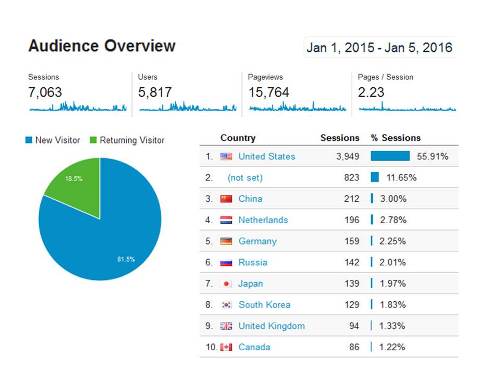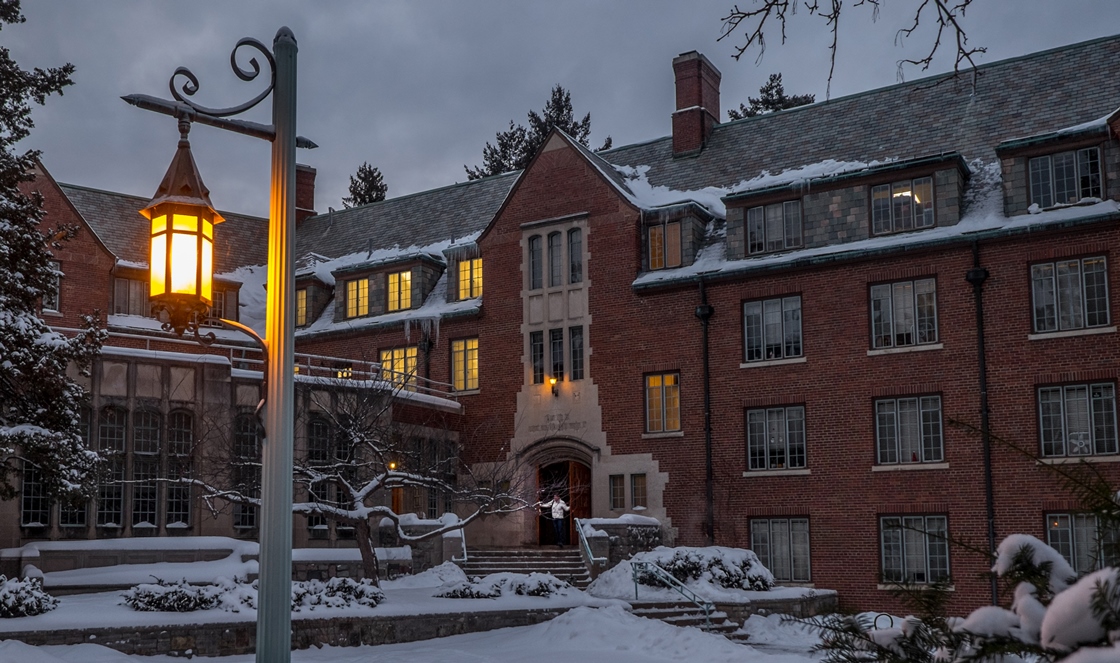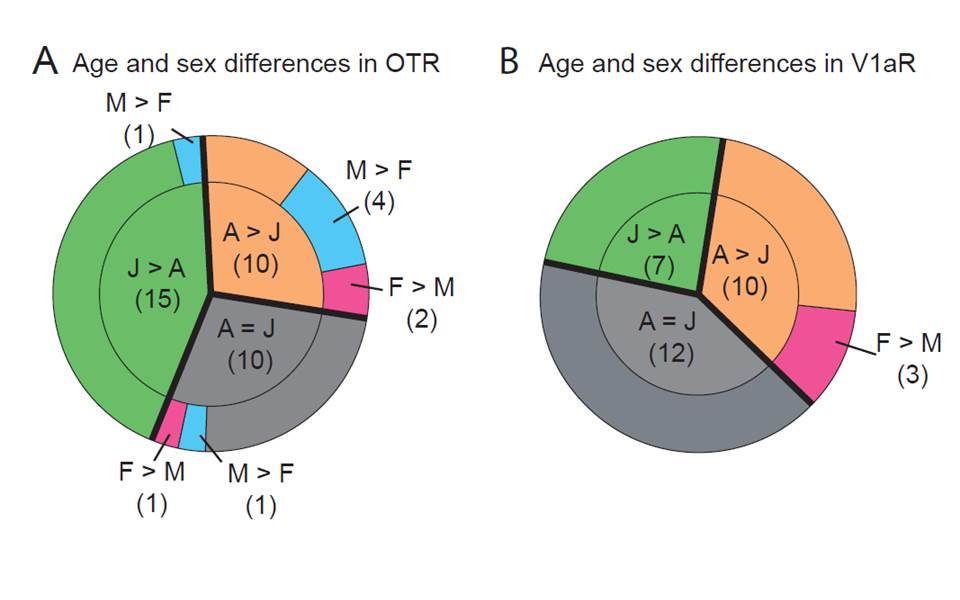November 2016
Remco, Brett, Kelly, Nick, Caroline, Nara and Christina presented posters of their work at the 7th Annual Meeting of the Society for Social Neuroscience and at the 46th Annual Meeting of the Society for Neuroscience in San Diego, CA.
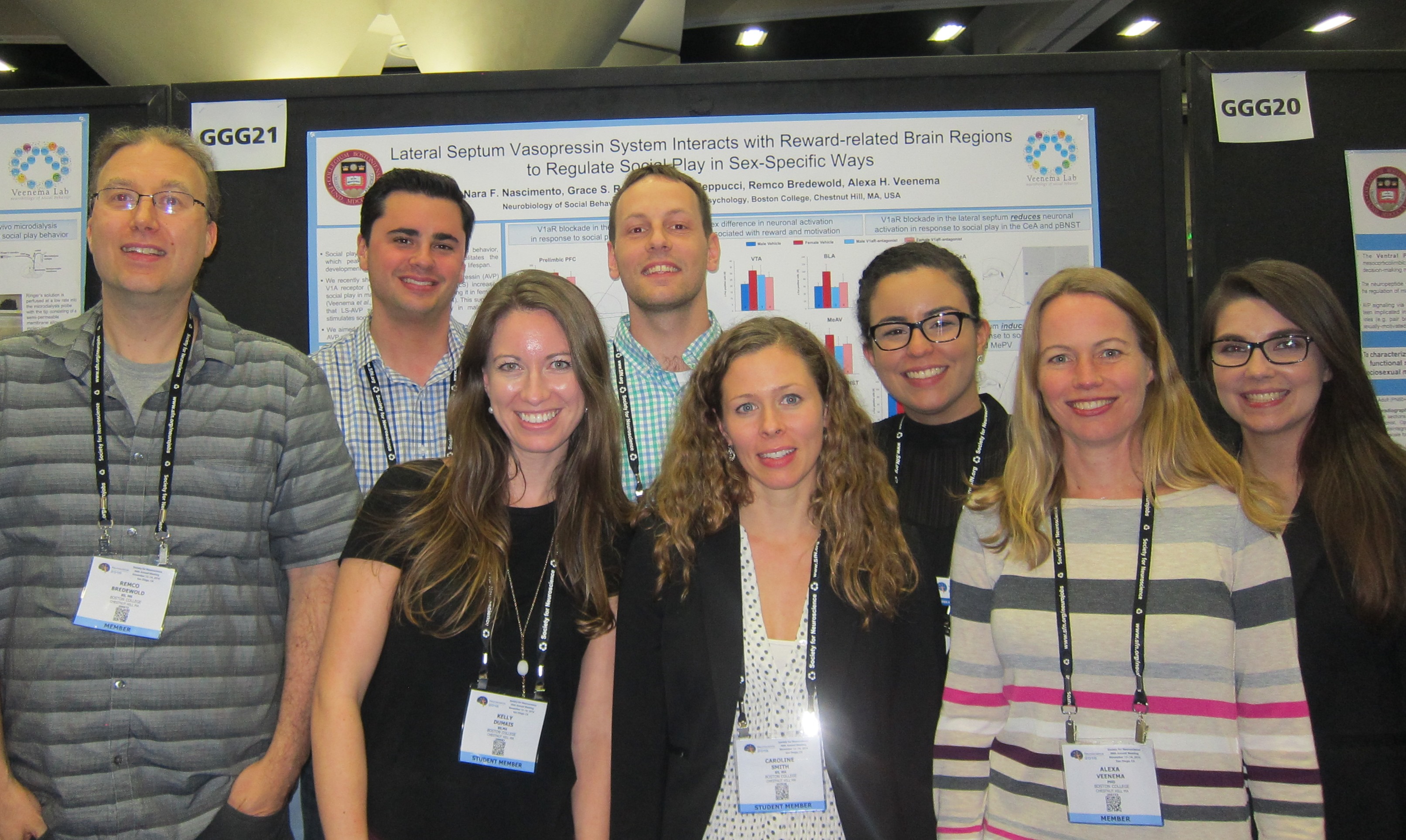
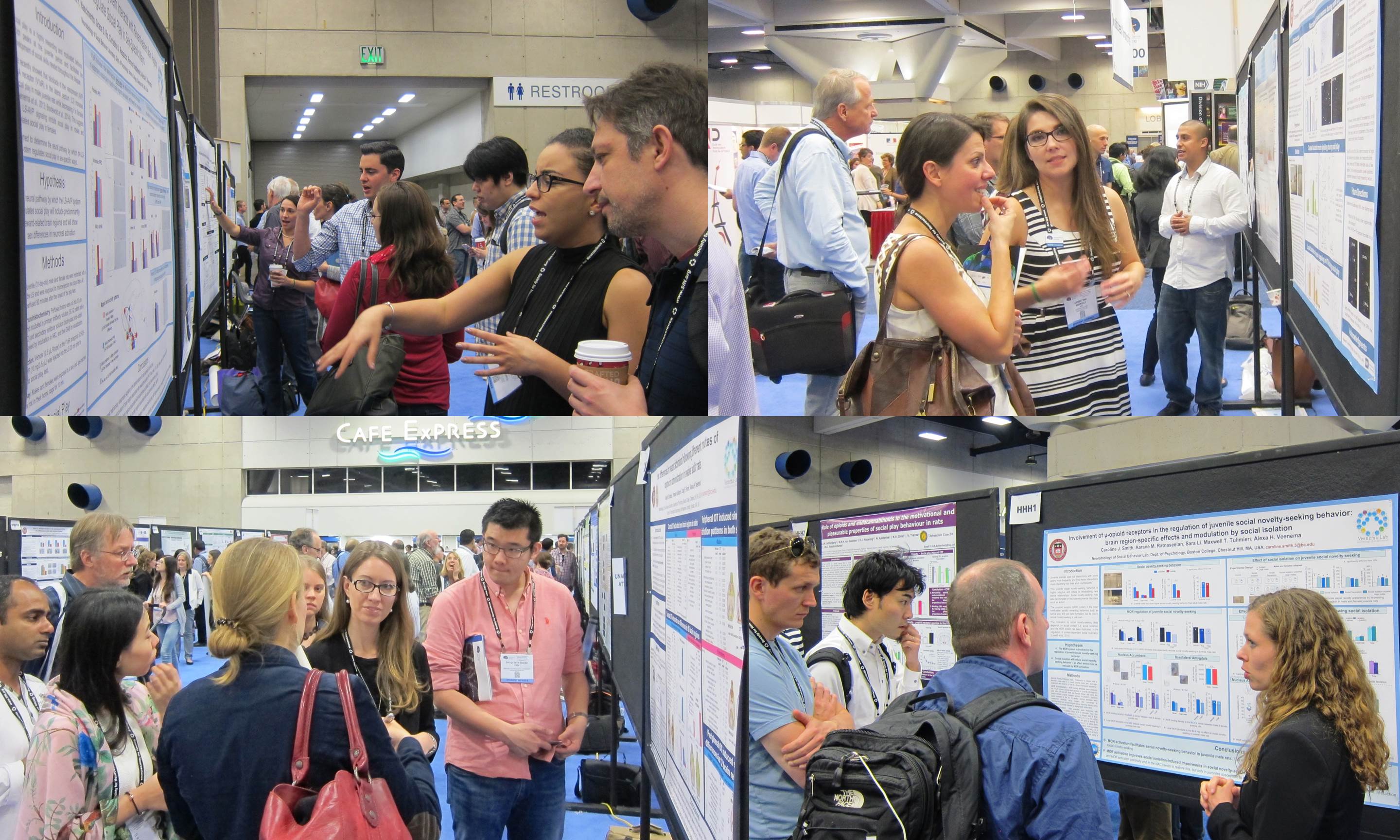
Photo below, lab dinner in San Diego with Nick, Laura, Remco, Caroline, Brett, Nara, Christina, Alexa, and Kelly.
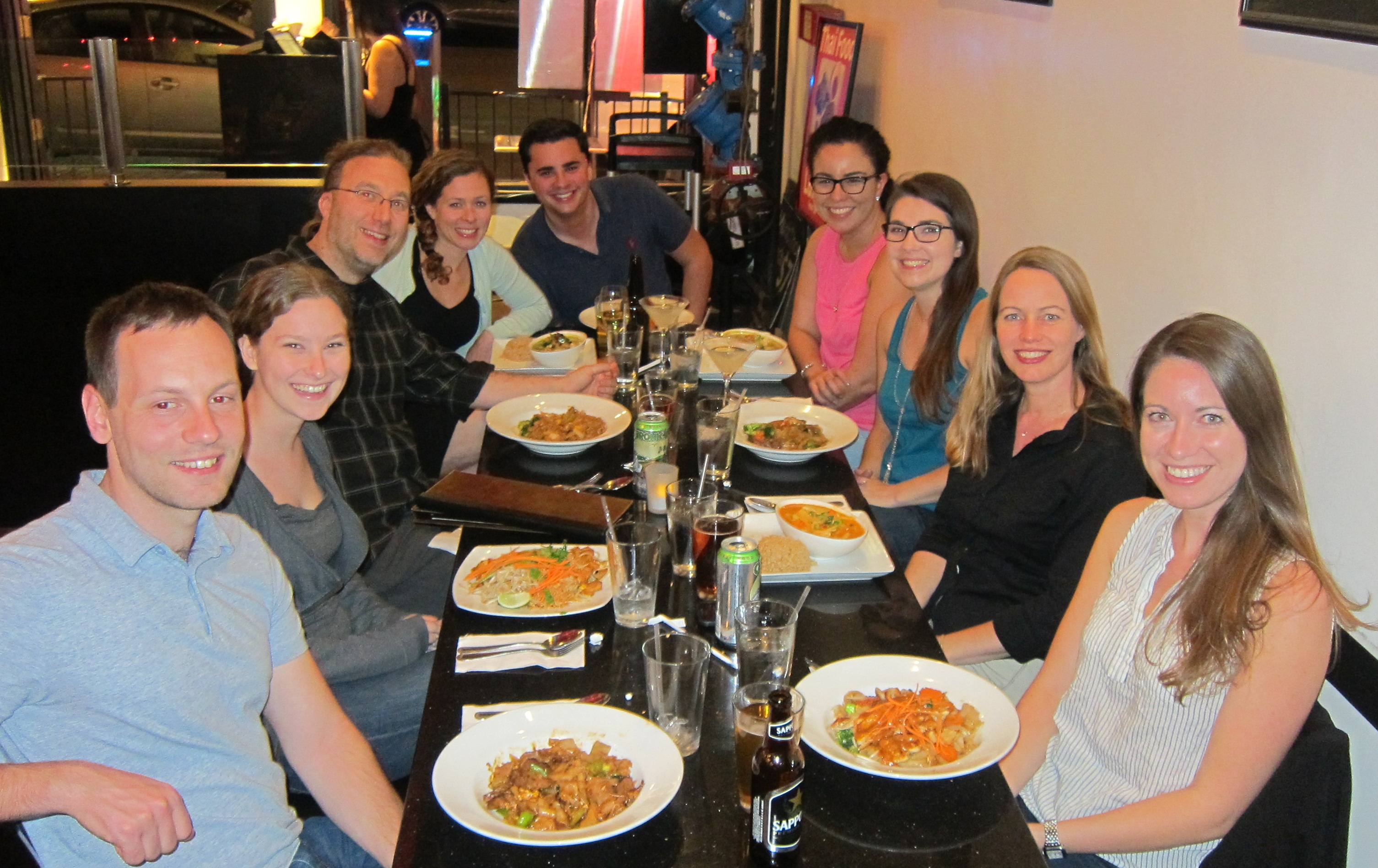
November 2016
Alexa chaired a symposium:”What do we learn about the social brain by adding sex as biological variable?” at the 7th Annual Meeting of the Society for Social Neuroscience in San Diego, CA. Speakers were Nirao Shah (Stanford), Jim Rilling (Emory), Ragini Verma (UPenn), and Alexa, with a Panel Q & A led by Program Officer Janine Simmons (NIMH) who discussed how to implement the new NIH policy to include sex as a biological variable in grant applications.
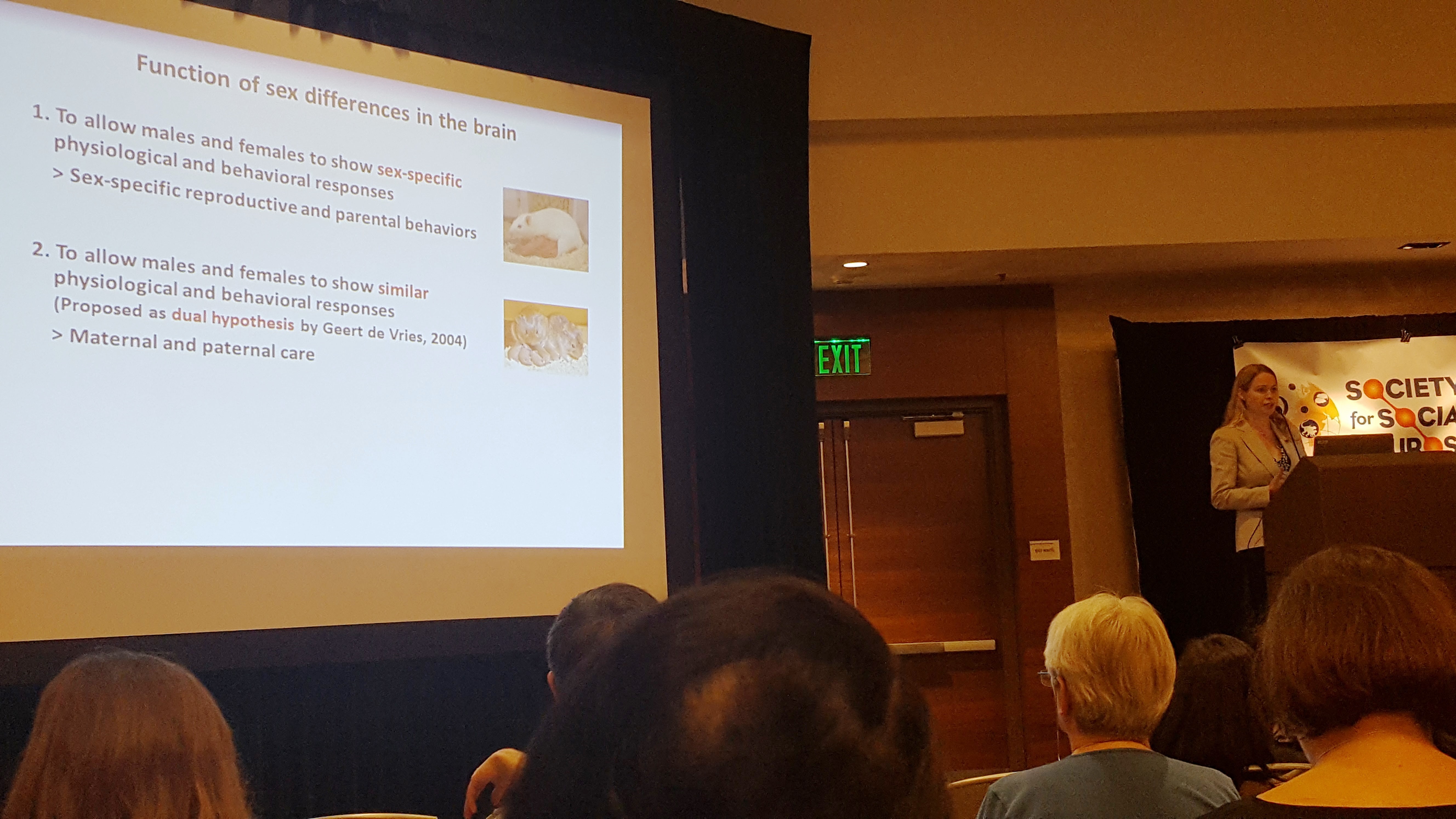
October 2016
Nick successfully defended his Master of Science Thesis on October 31st. On the photo, Nick and the Promotion Committee consisting of Profs. John Christianson, Laura Anne Lowery, and Alexa Veenema. Congrats to Nick!
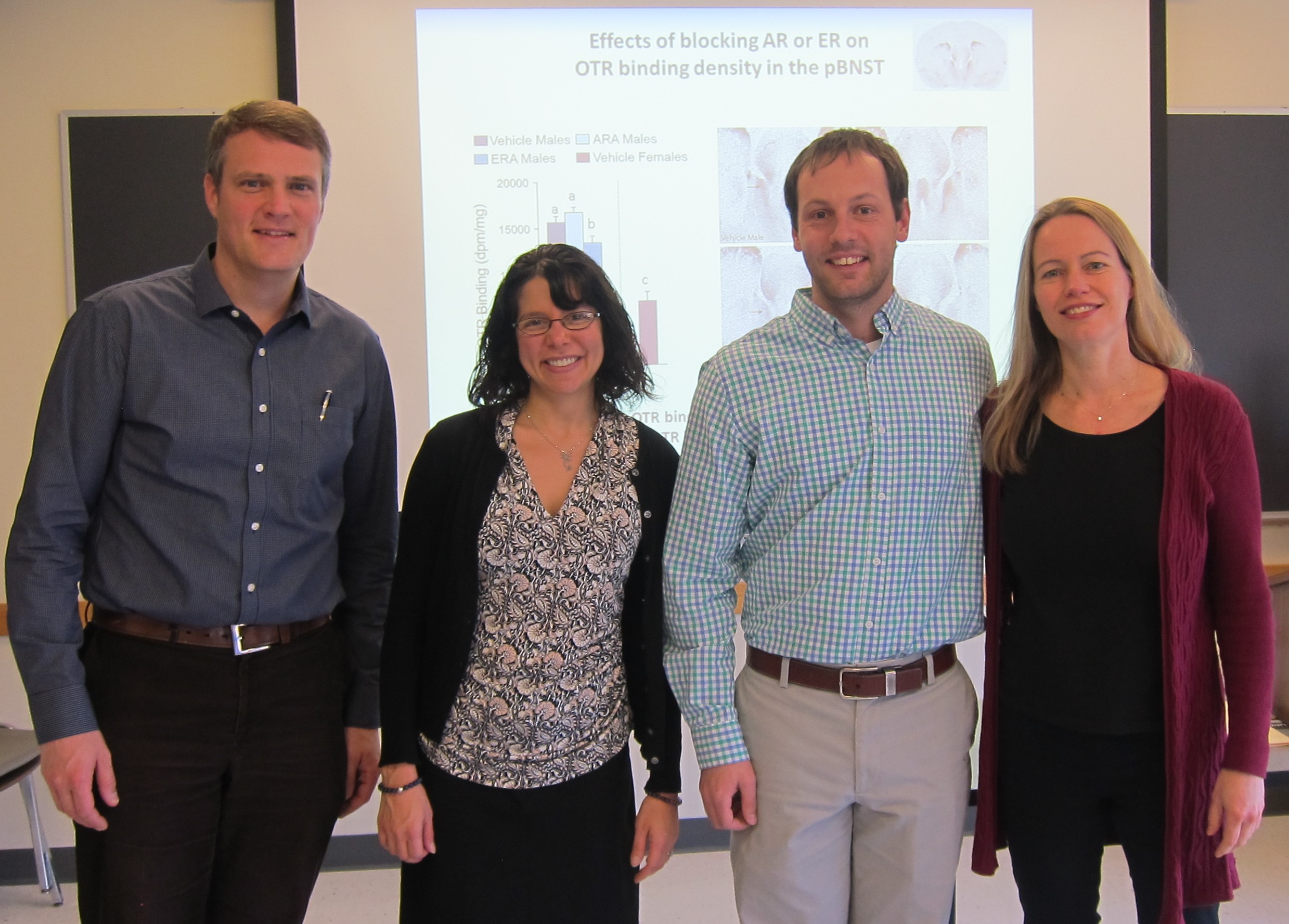
August 2016
Nick, Brett, Remco, Christina, Alexa, Caroline, Kelly, and Harry attended the 20th annual Meeting of the Society for Behavioral Neuroendocrinology in Montreal, Canada, with everyone (except for Alexa) presenting posters.
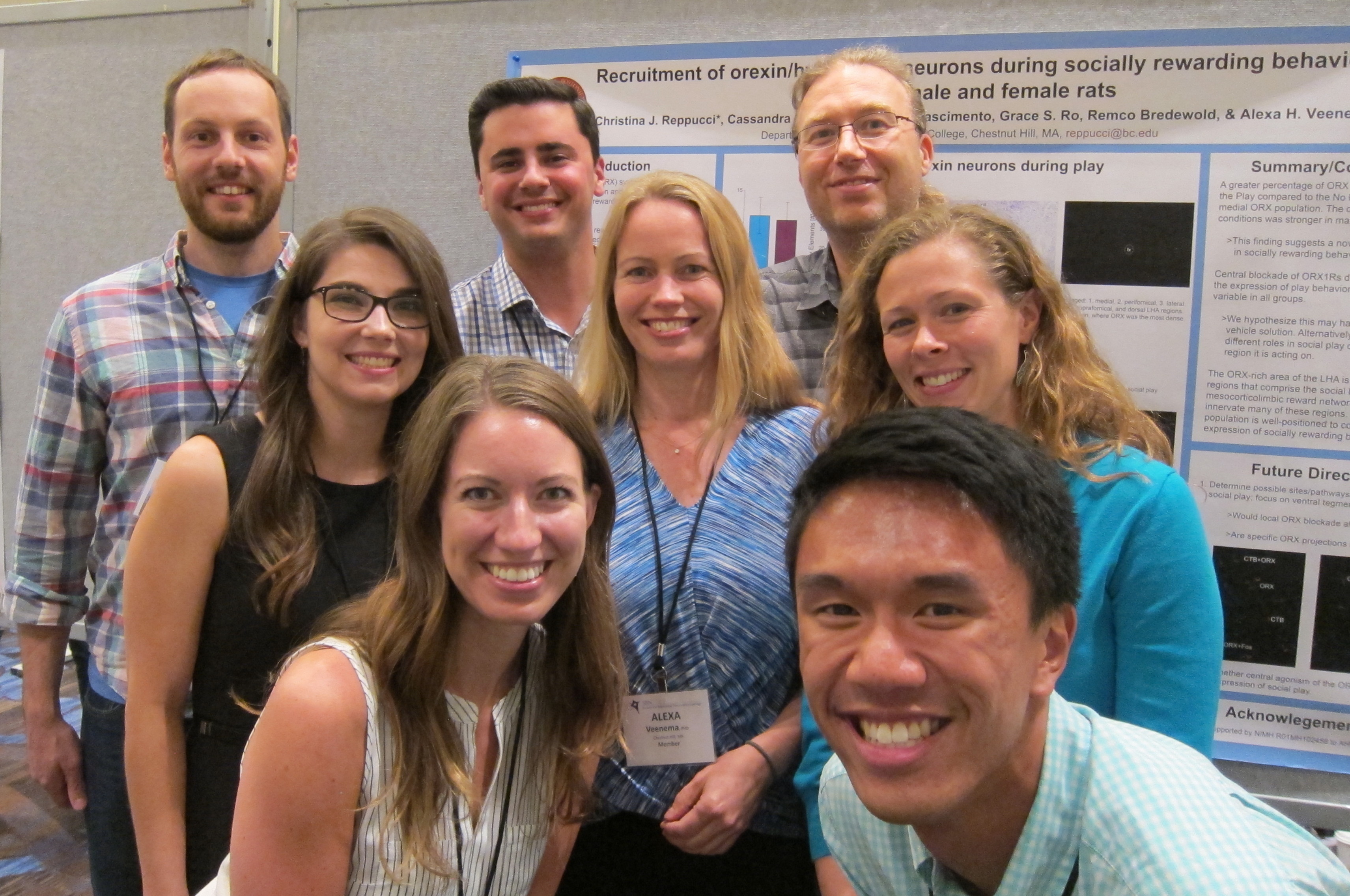
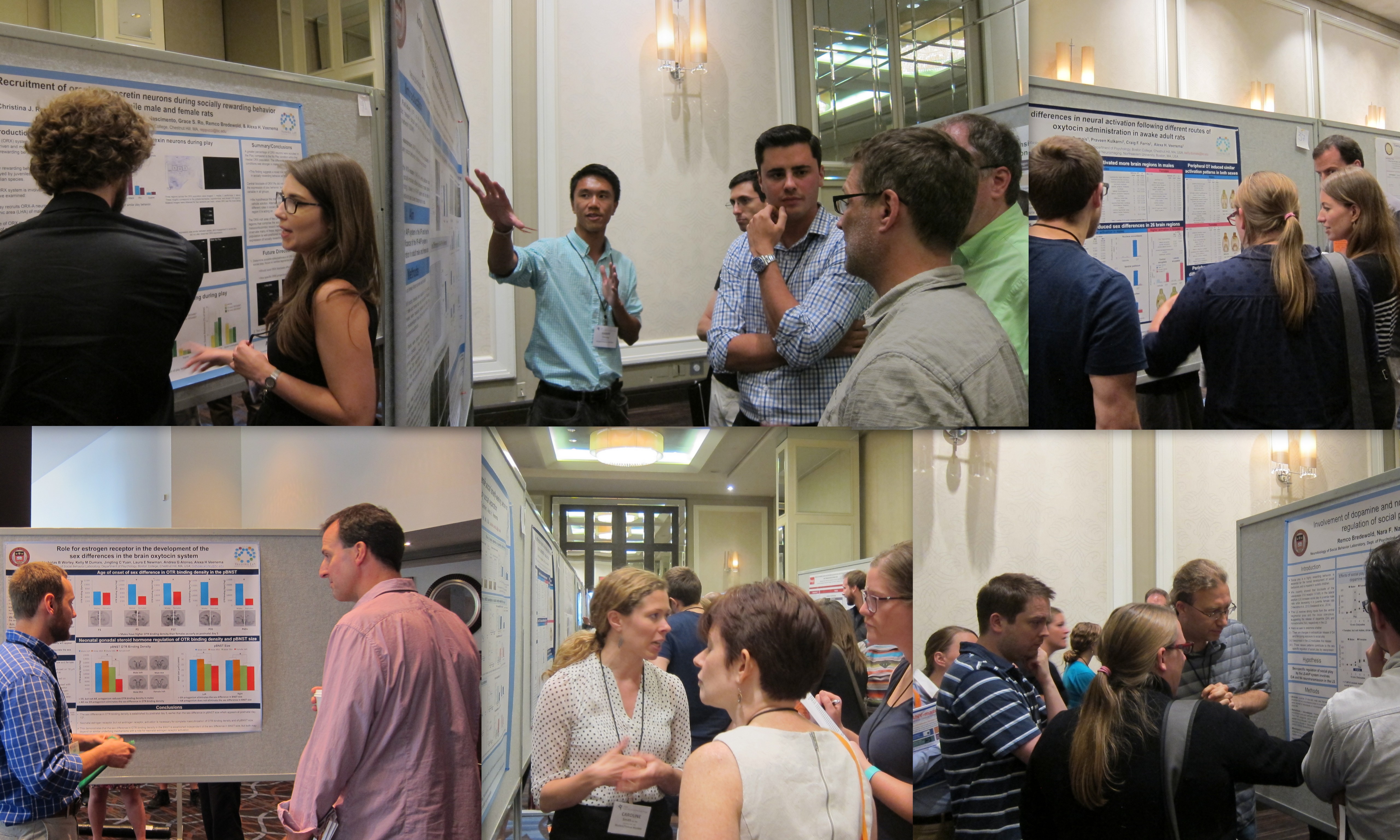
The SBN conference was also an important social event (see photos below) including a unique dining experience at Restaurant O.Noir, where the Veenema and Ophir labs plus associates (last photo) dined in complete darkness and were served surprise dishes by visually impaired staff.
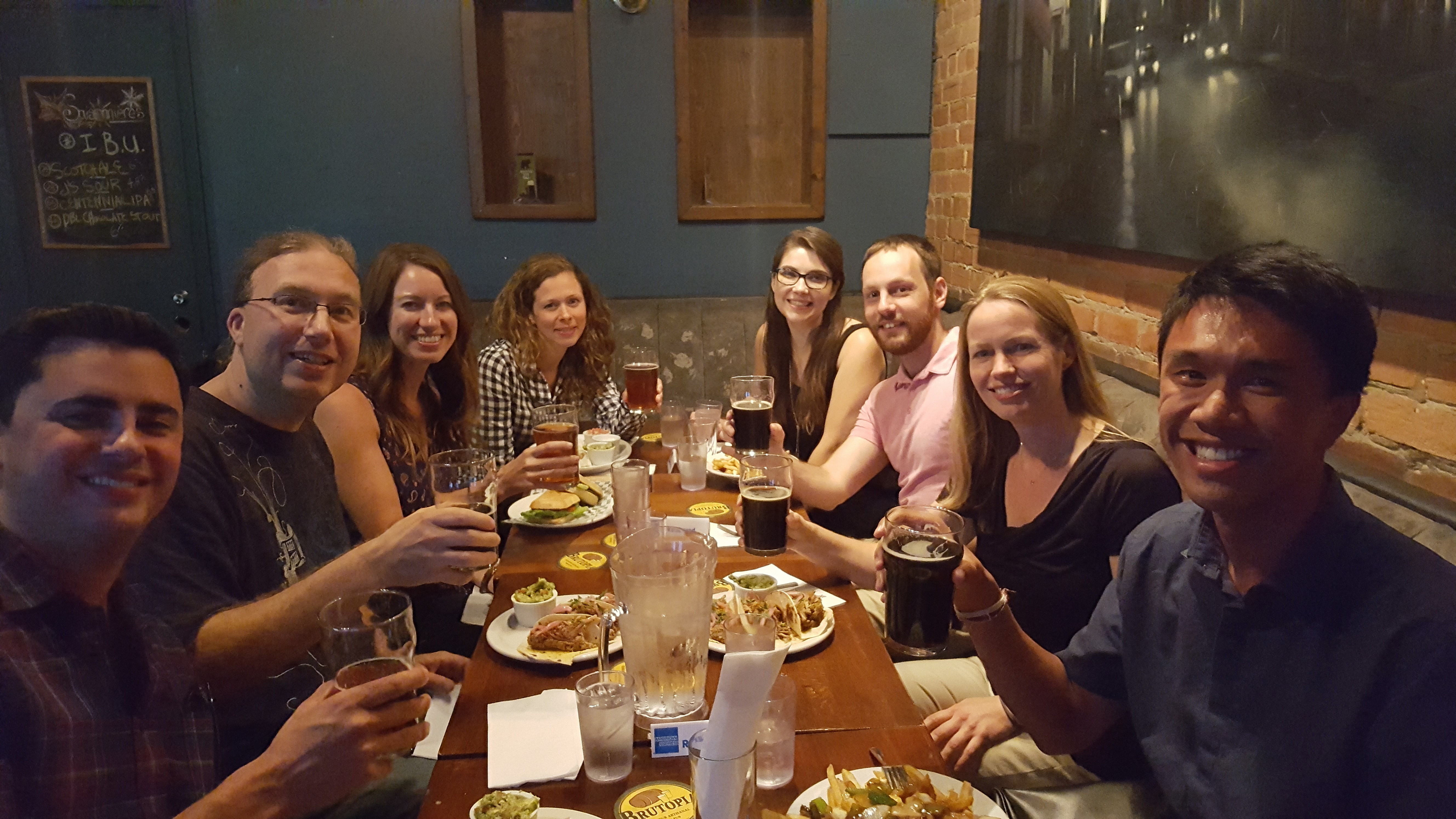
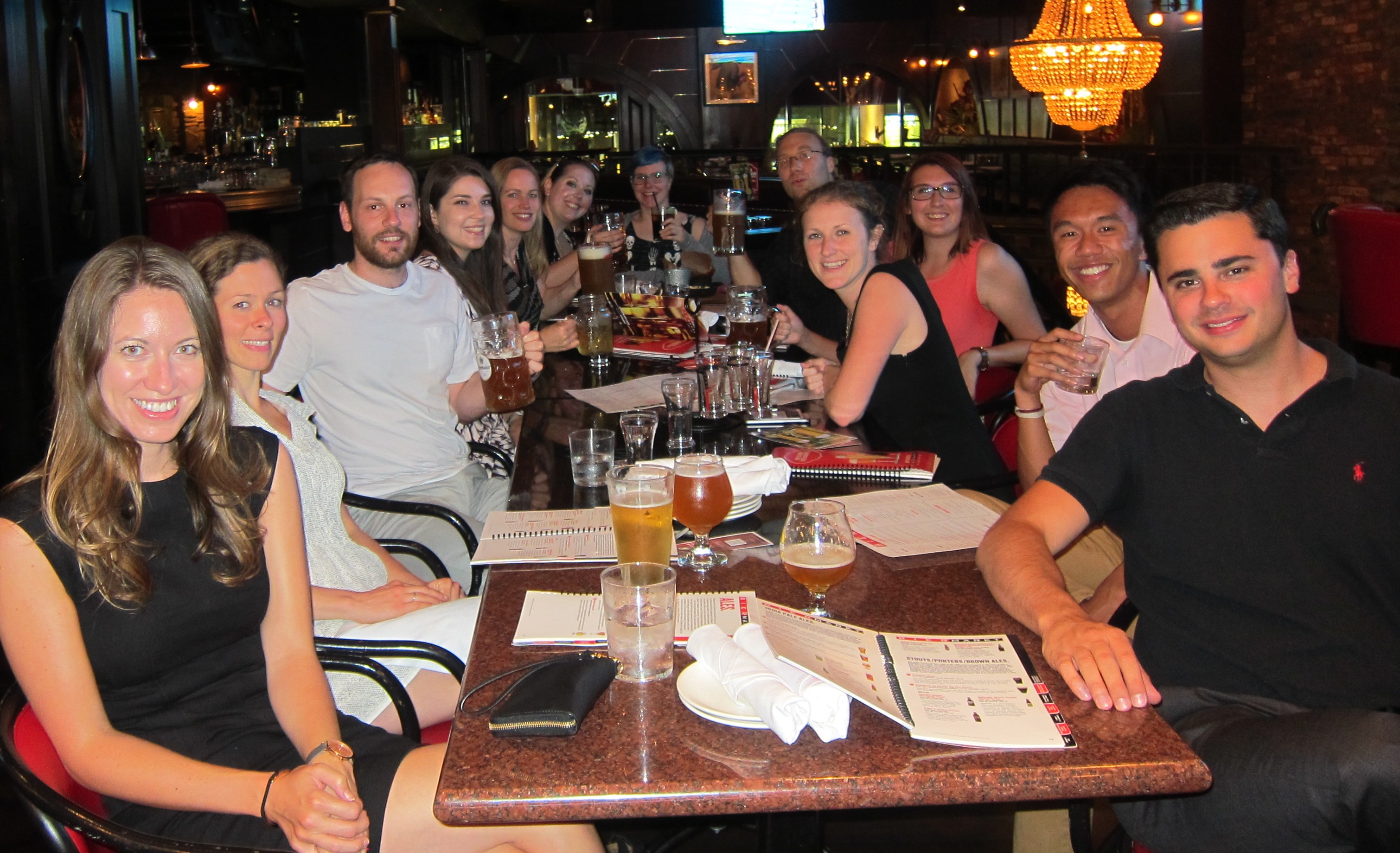
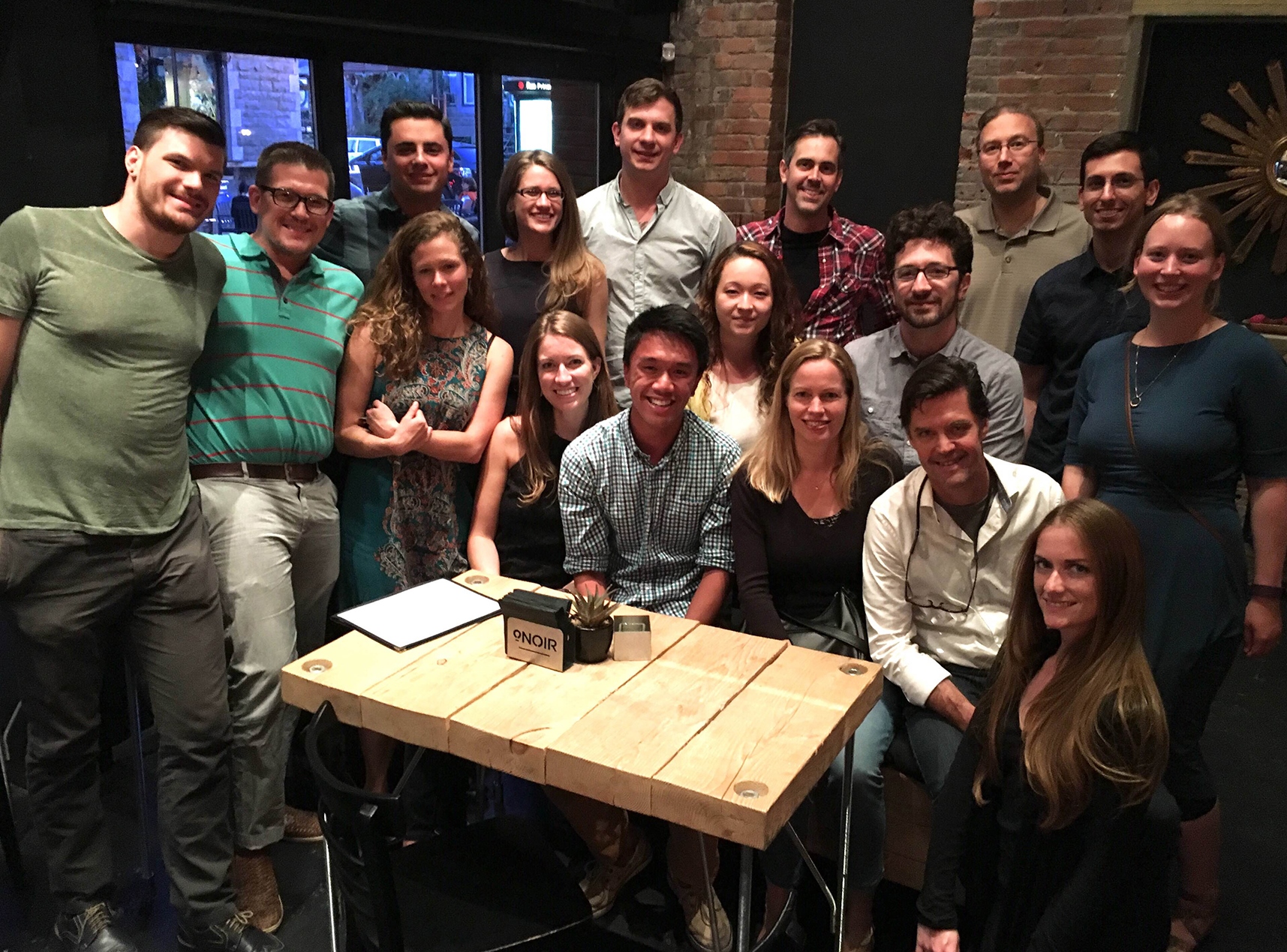
July 2016
Caroline published a paper in the journal Brain Structure and Function entitled Age and sex differences in oxytocin and vasopressin V1a receptor binding densities in the rat brain: focus on the social decision-making network. Caroline, Max, Sara, Ari, Remco, and Alexa demonstrated the presence of age (juvenile versus adult) and sex differences in the binding density of the oxytocin receptor (OTR) and vasopressin V1a receptor (V1aR) in the rat brain, particularly, in brain regions that form the social decision-making network. We discuss in the paper that age differences in OTR and V1aR binding densities may have implications for the regulation of social motivation (through higher OTR binding in striatal areas) and social and spatial memory (through age differences in OTR and V1aR in the hippocampus, lateral septum and mammillary nuclei) in juveniles, and for the regulation of adult-typical social behaviors (through higher OTR and V1aR in nodes of the social decision-making network and higher OTR in cortical areas). We further showed, for the first time, that most sex differences in OTR and V1aR binding are already present at juvenile age and are found in regions showing a further increase in binding density in adults. We discuss that these regions represent a unique network in which to expect both age and sex differences in the regulation of social behavior. Further research is needed to determine the behavioral relevance of age and sex differences in OTR and V1aR as well as the mechanisms that underlie these age and sex differences.
July 2016
Remco and Alexa attended the Biannual Meeting of the FENS Forum of Neuroscience in Copenhagen, Denmark. Remco presented a poster and Alexa chaired a symposium on “Neurobiology of social reward and attachment, with speakers Louk Vanderschuren (University of Utrecht, the Netherlands), Siri Leknes (Oslo University Hospital, Norway), Larry Young (Emory University, USA), and Alexa.
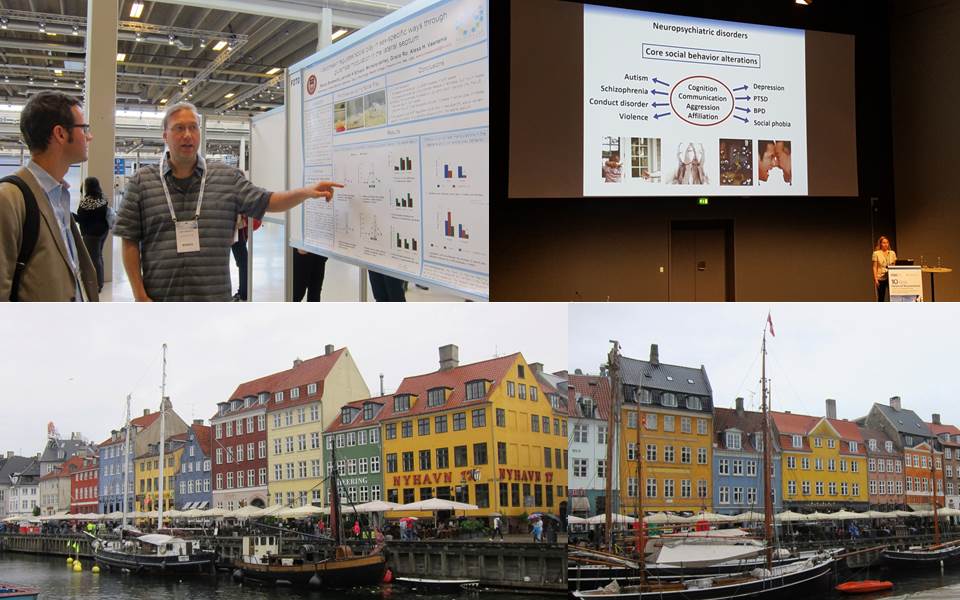
July 2016
Alexa has been promoted to Associate Professor with tenure as of July 1, 2016!
June 2016
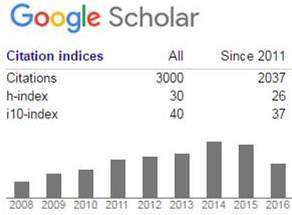 Citations to Alexa’s publications reached 3000 on Google Scholar! There are two additional measures of impact. The first is the h-index, which is a measurement that aims to describe the scientific productivity and impact of a researcher, and is 30 which means that 30 of Alexa’s publications have at least 30 citations each. The second is the i-10 index which is 40 and indicates that 40 of Alexa’s publications have been cited at least 10 times.
Citations to Alexa’s publications reached 3000 on Google Scholar! There are two additional measures of impact. The first is the h-index, which is a measurement that aims to describe the scientific productivity and impact of a researcher, and is 30 which means that 30 of Alexa’s publications have at least 30 citations each. The second is the i-10 index which is 40 and indicates that 40 of Alexa’s publications have been cited at least 10 times.
May 2016
Kelly published a paper in the journal Neuroscience entitled Role of the oxytocin system in amygdala subregions in the regulation of social interest in male and female rats. Kelly and co-authors Andrea Alonso, Remco, and Alexa showed that the central amygdala, a brain region involved in fear and anxiety, also modulates social investigation behavior in adult male rats. Specifically, pharmacological blockade of the oxytocin receptor in the central amygdala decreased the investigation of a juvenile rat in males. Interestingly, the same treatment failed to alter social investigation in females. Furthermore, Kelly is the first to demonstrate that the extracellular release of oxytocin in the central amygdala is similar between males and females under baseline conditions. Surprisingly, oxytocin release did not increase in males during social investigation while it decreased in females showing low levels of social investigation. Combined, these results suggests that baseline release of oxytocin in the central amygdala is sufficient to facilitate social investigation in males, while it may serve a different function in females.
May 2016
Brett, Caroline, Kelly, and Nick presented their work at the 10th annual meeting of the Organization for the Study of Sex Differences in Philadelphia, PA.
May 2016
Daniel Cho was honored as Scholar of the College at Boston College. The Scholar of the College award is a designation awarded to exceptional students who have excelled academically in their undergraduate studies and who have done substantial independent scientific work of the highest quality in their senior year. Daniel was supervised by Kelly Dumais (on photo).
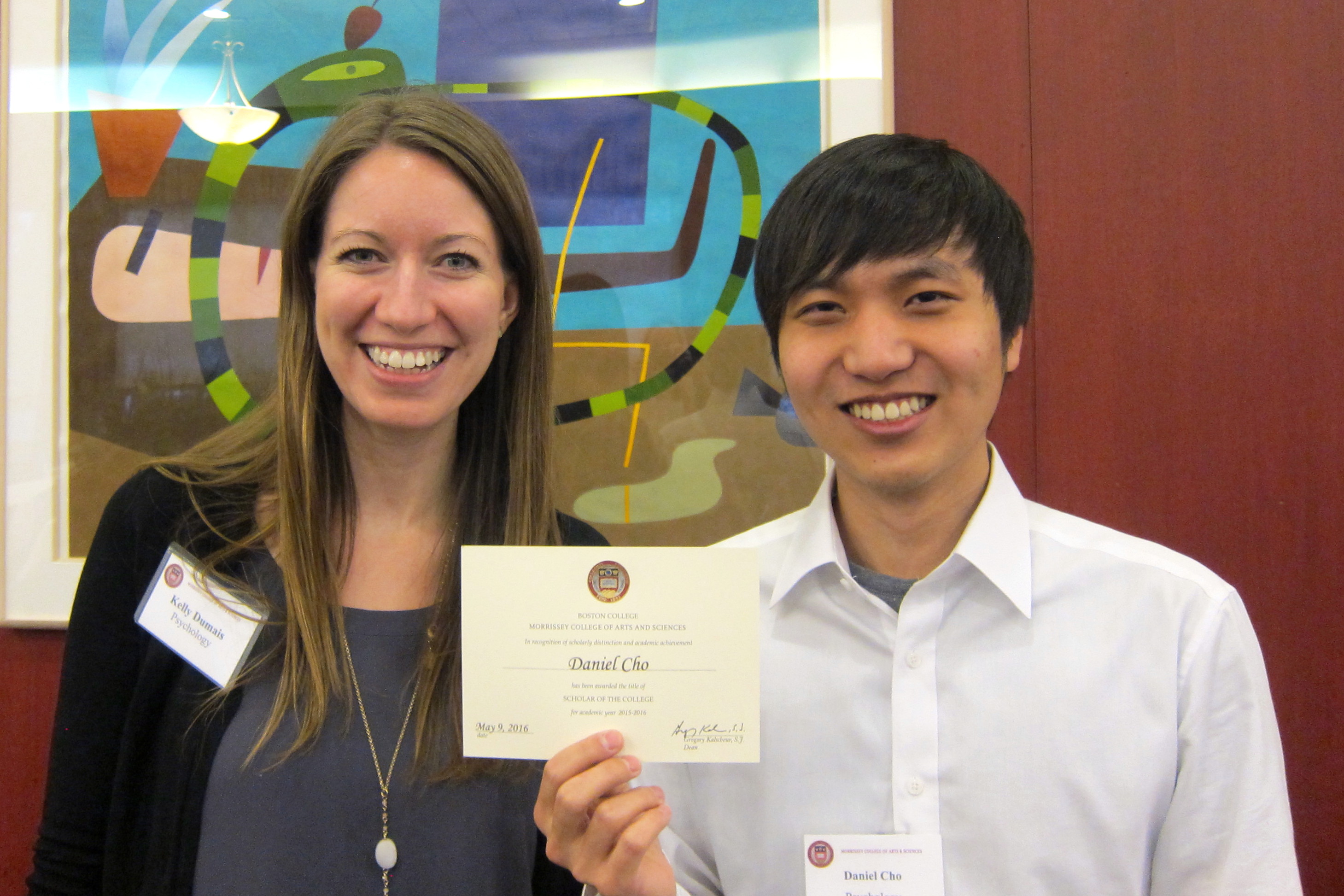
May 2016
Ari Ratnaseelan, Grace Ro, Christine Yuan, Daniel Cho, Liz Nussbaum, and Sara Li presented posters on their research projects at the annual Psychology Undergraduate Research Conference at Boston College.
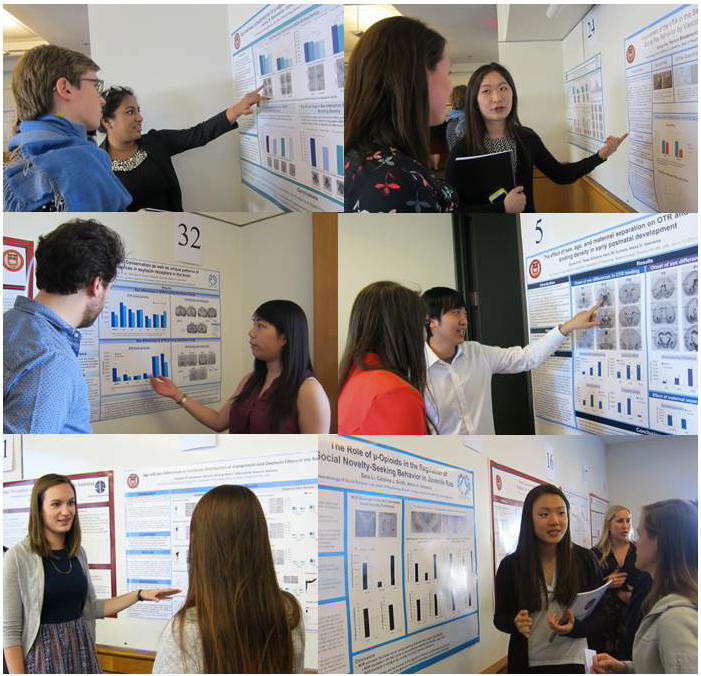
May 2016
Nick and Caroline gave talks about their research at the annual Graduate Research Day of the Department of Psychology at BC.
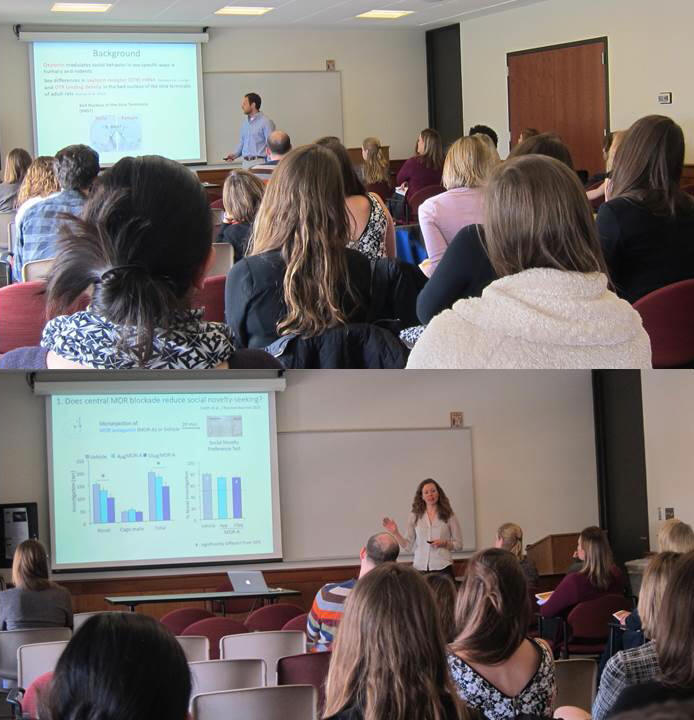
April 2016
Kelly Dumais is the 2016 recipient of Boston College’s Donald and Helene White Dissertation Award for the best dissertation in the field of social sciences. Congrats to Kelly!
March 2016
Kelly Dumais successfully defended her dissertation!! Her committee members were Profs. Alexa Veenema (BC), Gorica Petrovich (BC), Elizabeth Kensinger (BC), and Craig Ferris (NEU). Kelly is author on five peer-reviewed articles, on one review article, and on one book chapter. Kelly received three fellowships: the F31 NIMH Ruth L. Kirschstein NRSA Fellowship, the Engelhard Pingree Research Fellow, and the Dissertation Research Fellowship (both awarded by BC GSAS). We celebrated Kelly’s successful PhD completion with champagne. Congrats to Dr. Kelly Dumais!
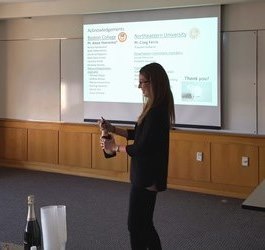
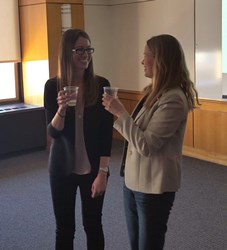
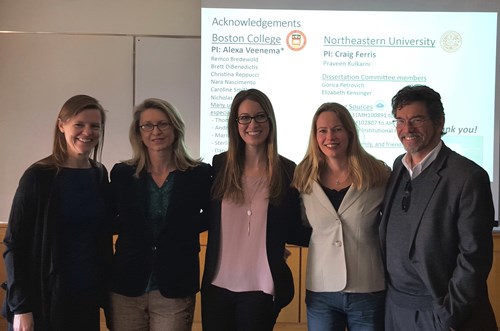
February 2016
Brett, Liz and Harry attended the annual NEURON conference at Quinnipiac University. Photo below depicts Harry (left) and Liz (right) presenting a poster on their undergraduate research projects.
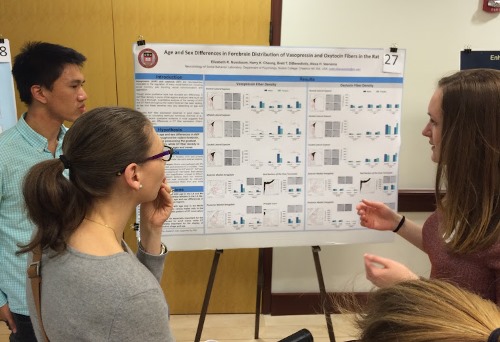
February 2016
Kelly and Caroline gave talks about their research on the effects of oxytocin on neuronal activation using fMRI in awake male and female rats (Kelly) and the roles of opioids and oxytocin in social novelty seeking behavior in juvenile rats (Caroline) at the Social Brain Sciences Symposium 2016 at Brandeis University.
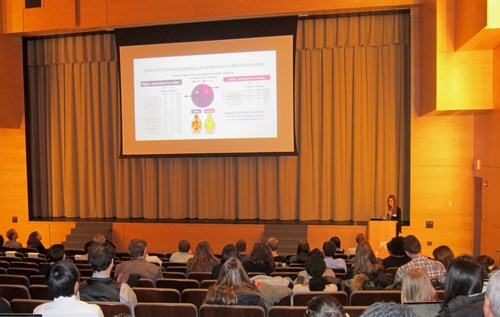
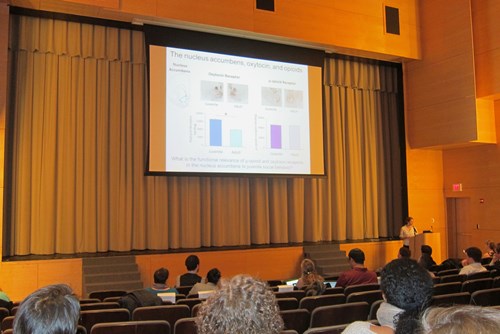
January 2016
Have you ever wondered whether our lab website is viewed by others? And if so, by how many and where they are from? Google Analytics gives you the answers. Since January 2015, the lab website has been viewed by more than 5800 users! These users are from 101 countries and 1509 cities! Within the USA, users are from 48 states (Alaska and West Virginia haven’t found us yet) and 668 cities! Isn’t that amazing? Below you will find some of these statistics with the top ten countries of people visiting the website.
